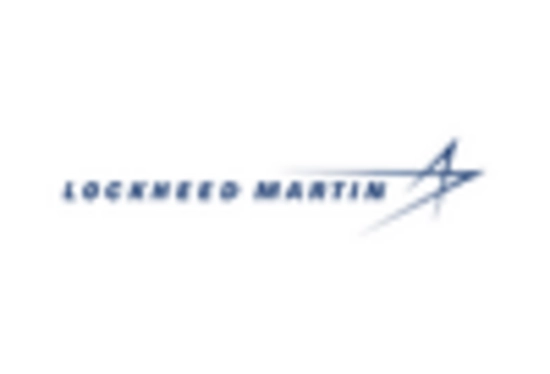Increased Defense Spending
The Radiation Hardened Electronics Semiconductor Market is benefiting from heightened defense spending across various nations. Governments are increasingly prioritizing the development of advanced military technologies, which necessitate the use of radiation-hardened electronics to ensure operational reliability in hostile environments. For instance, the U.S. Department of Defense has allocated substantial budgets for the procurement of radiation-hardened components for missile systems and satellite communications. This trend is likely to continue, as geopolitical tensions drive nations to enhance their defense capabilities. Consequently, the market for radiation-hardened semiconductors is projected to grow, with estimates suggesting a market value of approximately USD 1.4 billion by 2025, reflecting the critical role these components play in national security.
Growing Demand for Space Applications
The Radiation Hardened Electronics Semiconductor Market is experiencing a surge in demand driven by the increasing number of space missions and satellite launches. As nations and private companies invest heavily in space exploration, the need for reliable and resilient electronic components becomes paramount. For instance, the market for radiation-hardened semiconductors is projected to reach approximately USD 1.5 billion by 2026, reflecting a compound annual growth rate of around 7%. This growth is largely attributed to the necessity for electronics that can withstand the harsh conditions of space, including radiation exposure. Consequently, manufacturers are focusing on developing advanced radiation-hardened technologies to meet the stringent requirements of space applications, thereby propelling the market forward.
Advancements in Semiconductor Technology
Technological innovations in semiconductor design are significantly influencing the Radiation Hardened Electronics Semiconductor Market. The introduction of new materials and fabrication techniques has enhanced the performance and reliability of radiation-hardened devices. For example, advancements in silicon carbide (SiC) and gallium nitride (GaN) technologies are enabling the production of semiconductors that can operate efficiently in high-radiation environments. This evolution is crucial as it allows for the development of smaller, lighter, and more efficient components, which are essential for modern aerospace and defense applications. As a result, the market is expected to witness a steady increase in demand for these advanced semiconductors, with projections indicating a market size of over USD 1.2 billion by 2025.
Emerging Applications in Medical Devices
The Radiation Hardened Electronics Semiconductor Market is witnessing new opportunities in the medical sector, particularly in devices that require high reliability in radiation-prone environments. As medical technologies advance, there is a growing need for radiation-hardened components in applications such as radiation therapy equipment and diagnostic imaging systems. These devices must operate reliably in the presence of radiation, necessitating the use of specialized semiconductors. The market for radiation-hardened electronics in medical applications is projected to grow significantly, with estimates suggesting a potential market size of USD 800 million by 2026. This growth is indicative of the expanding role of radiation-hardened technologies in ensuring patient safety and enhancing the efficacy of medical treatments.
Regulatory Compliance and Safety Standards
The Radiation Hardened Electronics Semiconductor Market is increasingly influenced by stringent regulatory compliance and safety standards. As industries such as aerospace, defense, and nuclear energy face heightened scrutiny regarding the reliability of their electronic components, the demand for radiation-hardened semiconductors is expected to rise. Regulatory bodies are establishing more rigorous testing and certification processes to ensure that electronic devices can withstand radiation exposure. This trend is particularly evident in the aerospace sector, where compliance with standards such as DO-254 and DO-160 is essential. As a result, manufacturers are compelled to invest in radiation-hardened technologies, thereby driving market growth. The market is anticipated to reach a valuation of USD 1.3 billion by 2025, underscoring the importance of adherence to safety standards.















Leave a Comment